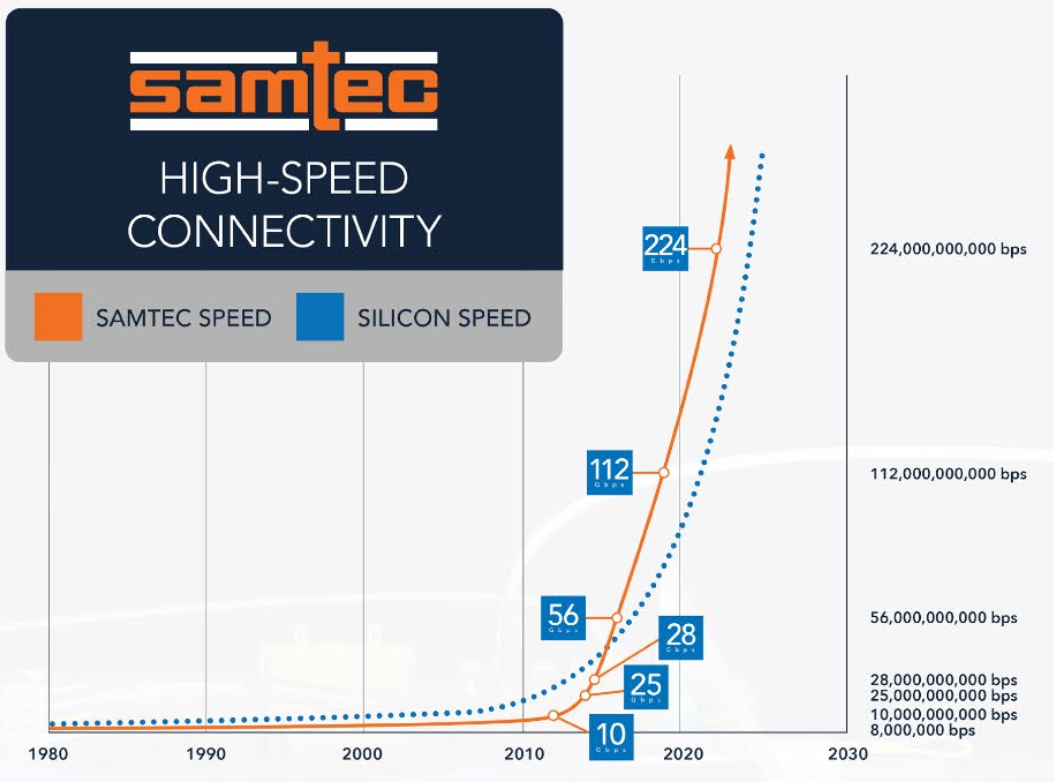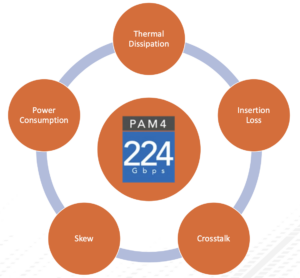
224 Gbps PAM4 gets attention for applications such as data center, AI/ML, accelerated computing, instrumentation and test and measurement. The question is how real is it and what are the challenges that need to be overcome to implement reliable channels at that data rate? If you wonder about these kinds of topics for your next design, there was recently a webinar that will help you find the answers you’re looking for. A link is coming, but let’s first examine what was discussed and how Samtec helps achieve 224G PAM4 in the real world.
About the Webinar
The webinar was presented by Signal Integrity Journal and sponsored by Rhode & Schwartz. In case you aren’t familiar with the company, Rhode & Schwartz is a family-owned company based in Germany that has been pioneering RF engineering practices for over 90 years with a worldwide footprint. The company offers state-of-the-art signal and power integrity measurement equipment, so they are also helping to facilitate 224G PAM4 channels. You can learn more about this important company here.

The webinar was presented by Matt Burns, Global Director, Technical Marketing at Samtec. Matt develops go-to-market strategies for Samtec’s Silicon-to-Silicon solutions. Over the course of 20+ years, he has been a leader in design, applications engineering, technical sales and marketing in the telecommunications, medical and electronic components industries. Matt is a frequent guest on SemiWiki, you can see some of his contributions here.
Matt set up the discussion with a direct observation – future system performance will depend on BOTH silicon speed and the speed of the channels to communicate data, be it an electron, a photon or an electromagnetic wave. The communication channel part of the system is where Samtec lives. The company refers to its capabilities as silicon-to-silicon solutions, underscoring the breadth of capabilities that are available. The diagram below gets to the main point, channel speed must never slow the system down.

If these points resonate, you must watch this webinar. A link is coming, but let’s examine some of the topics Matt discusses.
Topics Discussed
The graphic below is a good outline of the topics Matt covers in the webinar.

Matt spent time discussing all the transitions a signal will undergo in its silicon-to-silicon journey. There are many signal integrity challenges to be addressed here. Matt shared measurements of insertion loss across various frequencies on the PCB. He then showed insertion loss for Samtec’s Twinax cable technology, which delivers a far superior result as compared to the PCB.
You begin to see what an impact advanced transmission cables and connectors can have on system performance. Products that utilize Twinax were discussed, such as Samtec’s Flyover technology. There is a new product that delivers a 40% smaller cross-section area called Thinax and a third cable design that further improves performance and control called Eye Speed AIR.
If you thought cable design was simple, this webinar will enlighten you regarding how complex it really is when you are trying to achieve 224G PAM4 data rates. Samtec leads the industry in this area with some very unique technologies.
Matt gets into the details of how Samtec designs and manufactures its world-class cable assemblies. The complexity and technology involved are truly spectacular. He also gets into system design considerations – when to use copper and when to use optical communication for example. Beyond these decisions are many more regarding how the medium will interface to the chip, either directly as a co-packaged solution or as a near-chip connector.
There are many choices, and Samtec seems to have all of them covered. Signal density was also discussed. High-density Twinax connectors can route 1,024 signals from a large ASIC, a surprising statistic for me. Matt also gets into the thermal management techniques that can be applied to these high-density connectors.
Detailed performance data is provided for the newest technologies from Samtec. The results are quite impressive. An example design is also presented, with details of its performance.
To Learn More
Matt explained that Samtec goes beyond the products discussed in the webinar. The company collaborates with its customers to build high performance communication channels that meet system demands across the entire design, from front panel to backplane and rack-to-rack. This is a partner you want for your next design.
If 224 Gbps PAM4 is in your future, this is a must-see event. You can access the full webinar here. You can also access a new white paper from Samtec entitled Achieving 224 Gbps PAM4: Interconnect Challenges, Advantages and Solutions. And that’s how Samtec helps achieve 224G PAM4 in the real world.
Share this post via:





Comments
There are no comments yet.
You must register or log in to view/post comments.